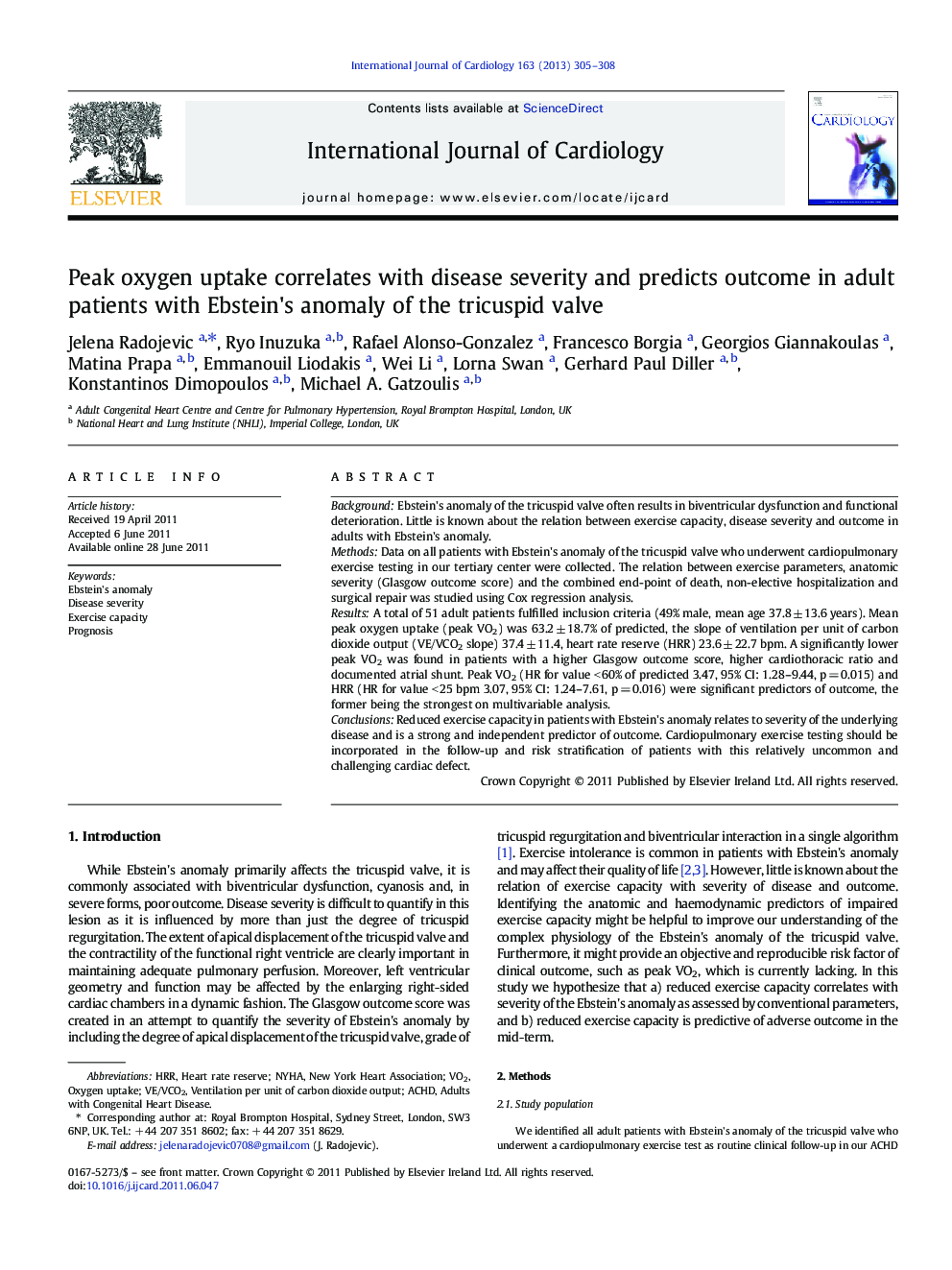| Article ID | Journal | Published Year | Pages | File Type |
|---|---|---|---|---|
| 5975757 | International Journal of Cardiology | 2013 | 4 Pages |
BackgroundEbstein's anomaly of the tricuspid valve often results in biventricular dysfunction and functional deterioration. Little is known about the relation between exercise capacity, disease severity and outcome in adults with Ebstein's anomaly.MethodsData on all patients with Ebstein's anomaly of the tricuspid valve who underwent cardiopulmonary exercise testing in our tertiary center were collected. The relation between exercise parameters, anatomic severity (Glasgow outcome score) and the combined end-point of death, non-elective hospitalization and surgical repair was studied using Cox regression analysis.ResultsA total of 51 adult patients fulfilled inclusion criteria (49% male, mean age 37.8 ± 13.6 years). Mean peak oxygen uptake (peak VO2) was 63.2 ± 18.7% of predicted, the slope of ventilation per unit of carbon dioxide output (VE/VCO2 slope) 37.4 ± 11.4, heart rate reserve (HRR) 23.6 ± 22.7 bpm. A significantly lower peak VO2 was found in patients with a higher Glasgow outcome score, higher cardiothoracic ratio and documented atrial shunt. Peak VO2 (HR for value < 60% of predicted 3.47, 95% CI: 1.28-9.44, p = 0.015) and HRR (HR for value < 25 bpm 3.07, 95% CI: 1.24-7.61, p = 0.016) were significant predictors of outcome, the former being the strongest on multivariable analysis.ConclusionsReduced exercise capacity in patients with Ebstein's anomaly relates to severity of the underlying disease and is a strong and independent predictor of outcome. Cardiopulmonary exercise testing should be incorporated in the follow-up and risk stratification of patients with this relatively uncommon and challenging cardiac defect.
